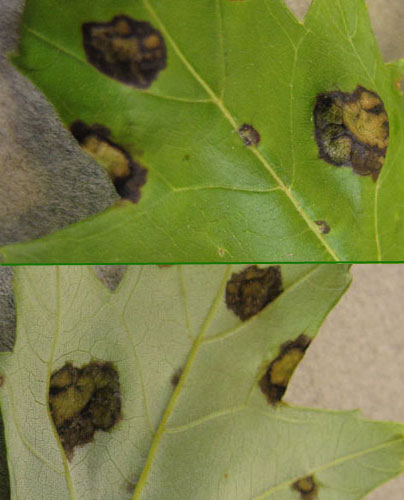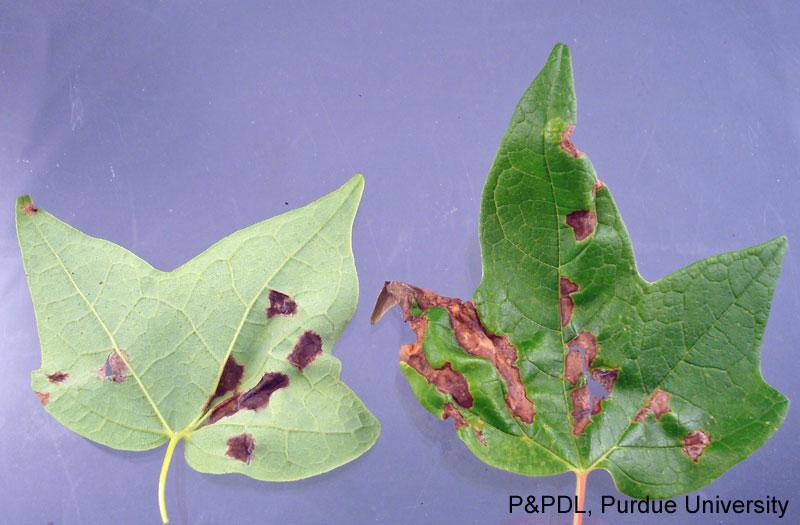
Impatiens downy mildew stunts growth, yellows leaves and eventually kills the plant. Photo courtesy of Purdue University Plant and Pest Diagnostic Laboratory
It’s been one of those springs—cool and wet, which is just the right formula for leaf diseases.
Maples, in particular, have brown or black spots, most likely a fungus disease call anthracnose.
“This was the most common plant problem sample that was brought into our office during the past month,” said Steve Mayer, horticulture educator at Purdue Extension-Marion County.
Maple leaves have also shown up with blisters, another fungus disease, he said. “Neither of these two foliar diseases will cause any long-term detrimental effects to healthy trees. However, most trees are stressed from last year’s drought and producing a second crop of leaves to replace those that fall prematurely (from the fungus disease) may cause additional stress.”
Purdue recommends adding 2 to 3 inches of mulch around trees, making sure to keep it away from the trunk.
Trees, shrubs and other drought-stressed plants should get at least 1 inch of water each week from either irrigation or rain. “Do not fertilize any more this growing season, as this may only stress the trees and shrubs by forcing new growth,” Mayer said.
Impatiens trying patience
More gardeners have sickly or dying bedding impatiens (I. walleriana). This best-selling annual for shade gardens has been hit with impatiens downy mildew, a deadly disease that persists in the soil for at least five years. The disease also can be carried by wind.
If impatiens did not do well last year, do not plant them again this year. There’s nothing you or growers can do to prevent this disease because there are no fungicides or other pesticides to control the problem. Remove infected plants. Do not compost them, but rather discard in the trash.
The disease started showing up in Indiana last summer, but has been severe in other states and Europe. The best remedy is to use other shade-tolerant plants, such as begonia, torenia or tropical plants. New Guinea impatiens and SunPatiens are not affected by impatiens downy mildew.

